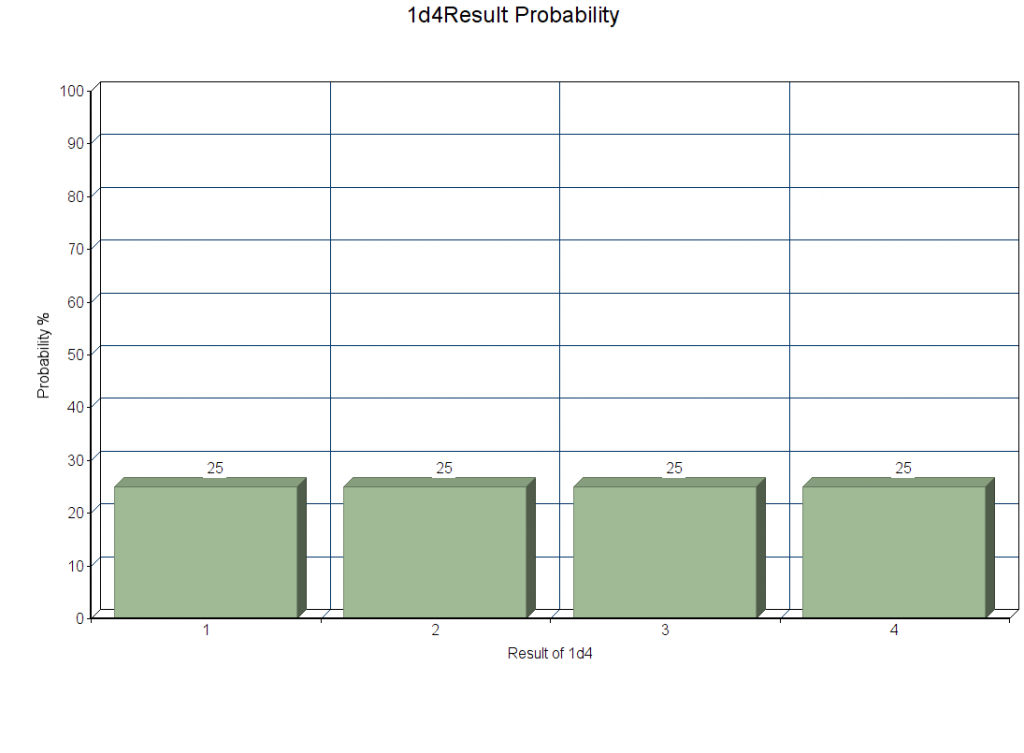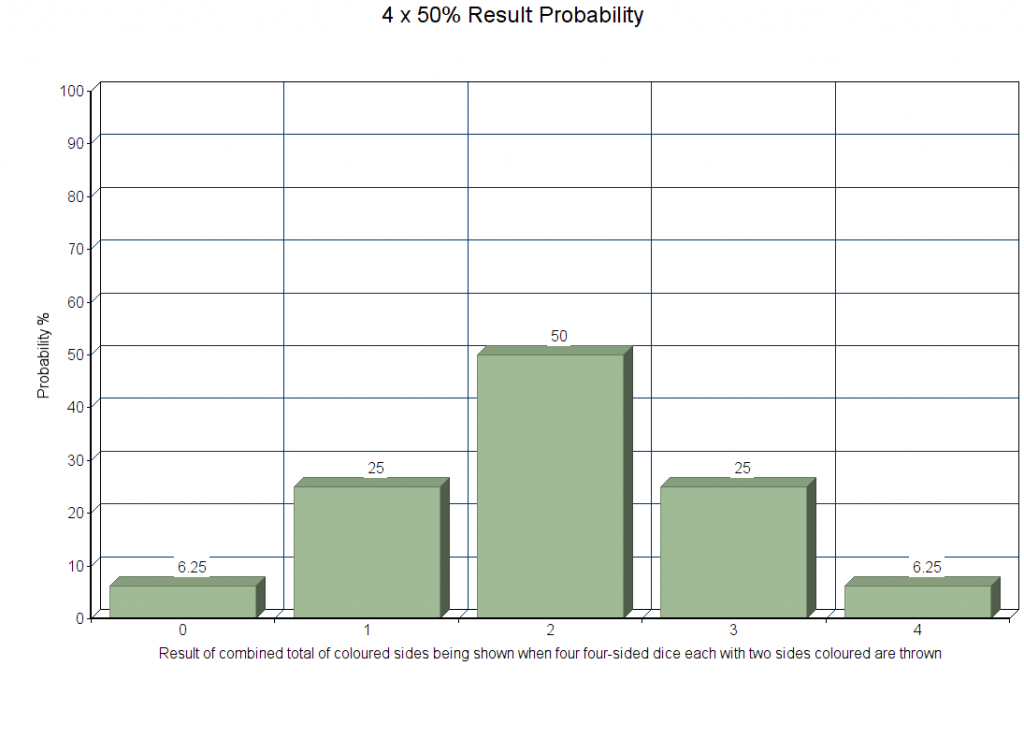I have been thinking about games, dice and probability. This has obviously caused much smoke to eminate from my ears and required long periods of lying down and groaning – but has also proved quite interesting. So often we play games and just go along with things – we trust the mechanics underneath the game. A few months ago though, I noticed something when writing this post that irritated me and got me thinking. I realised that some commercially available versions of the royal game of Ur made a horrible mistake – by replacing the 4 tetrahedral dice (which each have two points painted with dots and two painted without, giving a 50% chance of showing a coloured dot or no coloured dot) with one D4 (also tetrahedral – but labelled 1,2,3,4) then you totally change the likely or in fact possible dice outcomes.
The standard D4 gives you the following outcomes:

The ancient Sumerian dice, however, make it possible to roll 0,1,2,3 & 4 with 2 being the most likely and zero and four being unlikely, having a 1/16 chance. This gives you a totally different set of likely (or unlikely) outcomes:

As you can see, if you needed a 4 to get ‘home’ with one standard D4 – you have an even 25% chance. If, however, you are using the original dice, then you only have a 6.25% chance of rolling a 4 – this would not be a good outcome to bet on! Equally, your chance of getting exactly a 2 is twice as high – 50% rather than 25%. Understanding these mechanics greatly alters your game play. This got me thinking about wargames and the probabilities involved in them. In my next post I will start looking at this interesting subject (after I have had a lie down of course).